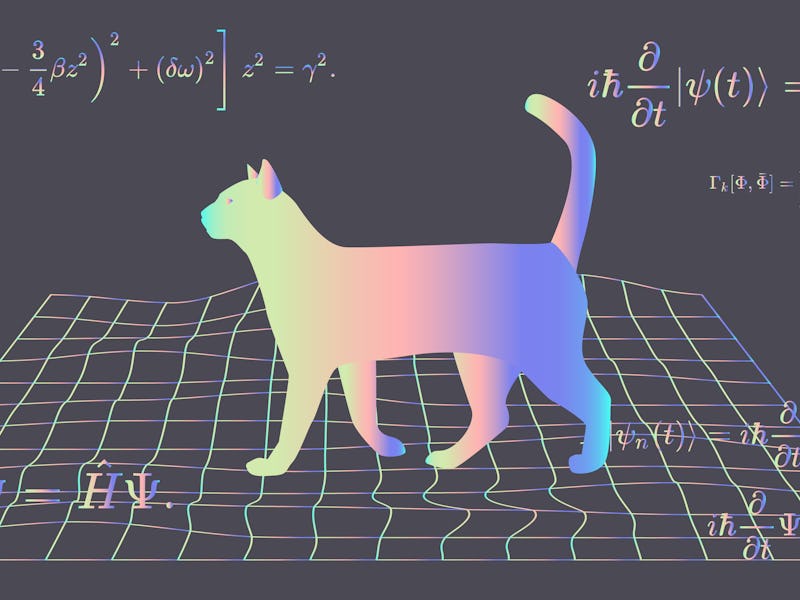New study paves the way for 'quantum internet'
Just imagine how many tabs you could have open at once with quantum computing power.

It’s no secret that the internet has a security problem. But researchers now believe they might have found a solution in the form of a “quantum internet” that would not only be able to better handle security issues in a communication network but could also solve problems classical computers could never fathom.
The internet as we know it today is a dispersed network of servers that are accessed remotely in order to show us our Twitter feeds or funny cat videos. These different points of the network are called nodes. Likewise, a “quantum internet,” or quantum communication network, is made of quantum nodes. These inherently have more computing power than their classical counterparts, thanks to their dual nature which allows them to contain two states of information at once.
Researchers have been long toiling to bring quantum computing to the masses, and last month, Google even declared it reached a benchmark called “quantum supremacy,” but applying these techniques to a network of quantum computers could affect not just one but many machines.
The research was published Friday in the journal Physical Review X and describes a proof-of-concept approach that compares both classical (or simply, non-quantum) and quantum approaches to a computational problem of “clustering,” i.e. grouping pieces of data based on their similarities. In the classical rendition, the algorithm is trained using pre-labeled data, meaning that it already knows certain characteristics and conditions expected in the data set. The quantum algorithm, on the other hand, had the much more difficult challenge of going in blind. This approach is called “unsupervised learning” and is typically much harder for classical computers to accomplish.
The researchers write in the study that this is the “first quantum extension of the unsupervised learning problem,” and as such, has the potential to help the field better understand how such systems could handle an influx of uncategorized data, as they would be asked to as a quantum internet network. The researchers write that the goal was to optimize the ways in which such an algorithm could accurately handle the influx.
While classical computers communicate using packets of information representing either 0's or 1's, quantum computers can communicate using both at once.
A particularly challenging point for the quantum algorithm was that the data itself is very sensitive to degradation or loss as a result of the algorithm “looking” at it. Because a quantum system inherently exists in multiple states, when it decides to look at a piece of data in order to inform how it sorts them, it inherently makes the data “choose” it’s own state. This is similar to Schroedinger’s famous cat, which is neither alive nor dead (or rather, both alive and dead) until an observer looks at it and one of those options becomes its reality.
The challenge then for the quantum algorithm is to strike a balance between observing enough of the data to correctly categorize it and not observing too much as to degrade it.
The researchers found that their algorithm was able to preserve much of the data in its original state, while maintaining optimal clustering, which they write, “adds to the usability of our device as a universal quantum data sorting processor.”
The authors write that these results particularly stand out against classical and semi-classical approaches to this problem which “obliterate” the data in their handling of it and whose probability of successful sorting declines as the dimensions, or complexity of the data set, expand.
In addition to security, the functionality displayed in these algorithms will be important for solving complex computational problems in the future. These problems include unstructured searches, discrete optimization and the solving of “many-body” problems — all of which pertain to understanding and handling many different variables at once.
Solving the many-body problem itself won’t necessarily change how we use our computers. But the ability of our computers through quantum technology to handle such complexity will, in turn, improve the speed and capability of such machines down the road.
Abstract:
We introduce the problem of unsupervised classification of quantum data, namely, of systems whose quantum states are unknown. We derive the optimal single-shot protocol for the binary case, where the states in a disordered input array are of two types. Our protocol is universal and able to automatically sort the input under minimal assumptions, yet partially preserves information contained in the states. We quantify analytically its performance for an arbitrary size and dimension of the data. We contrast it with the performance of its classical counterpart, which clusters data that have been sampled from two unknown probability distributions. We find that the quantum protocol fully exploits the dimensionality of the quantum data to achieve a much higher performance, provided the data are at least three dimensional. For the sake of comparison, we discuss the optimal protocol when the classical and quantum states are known.